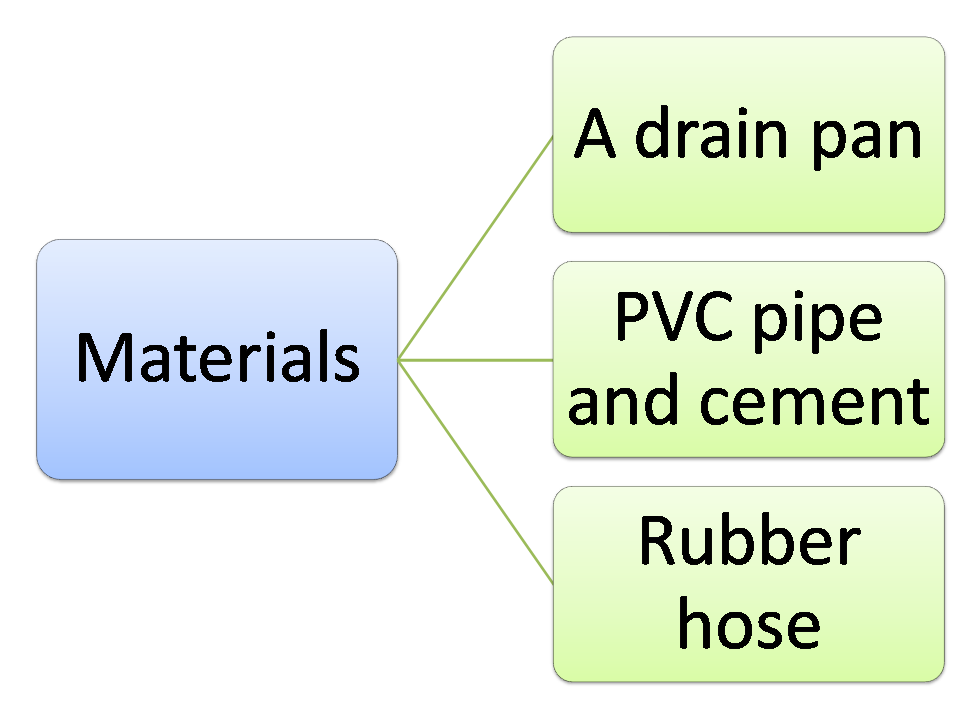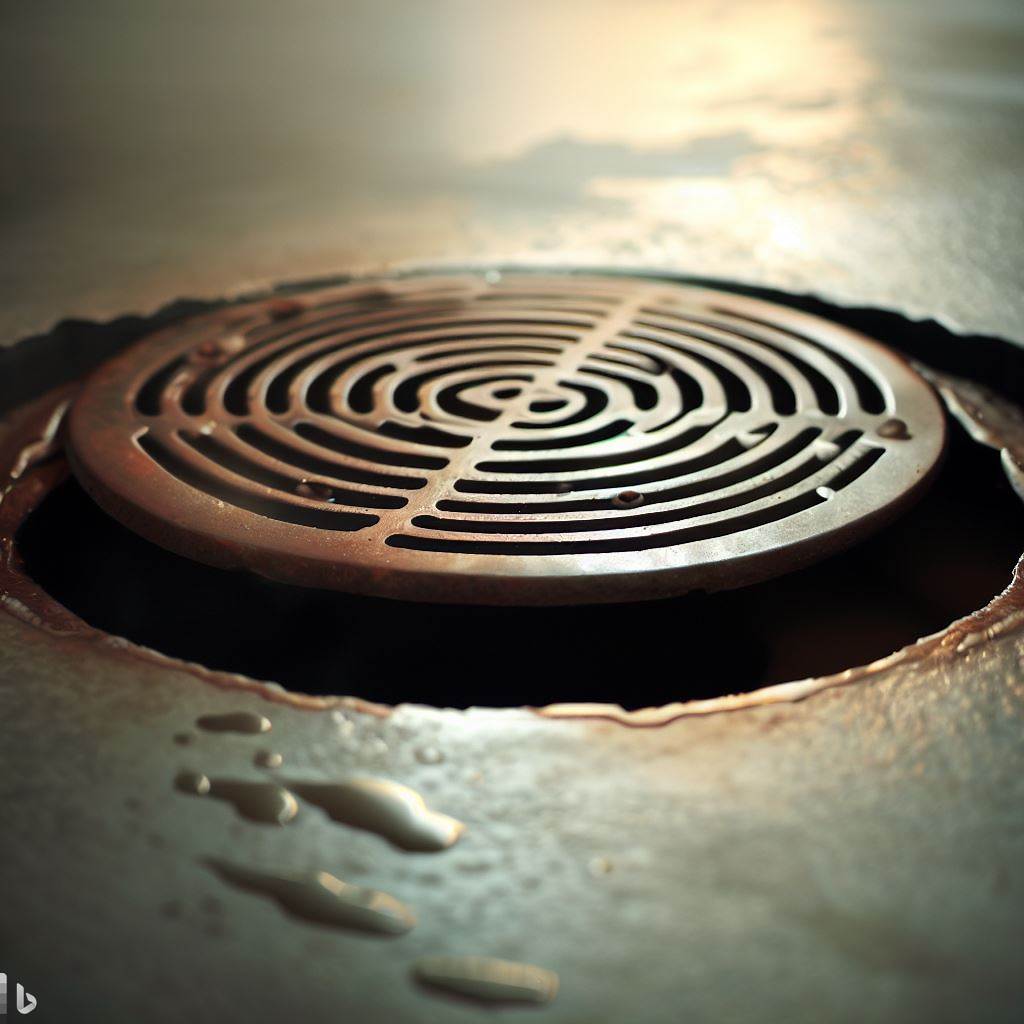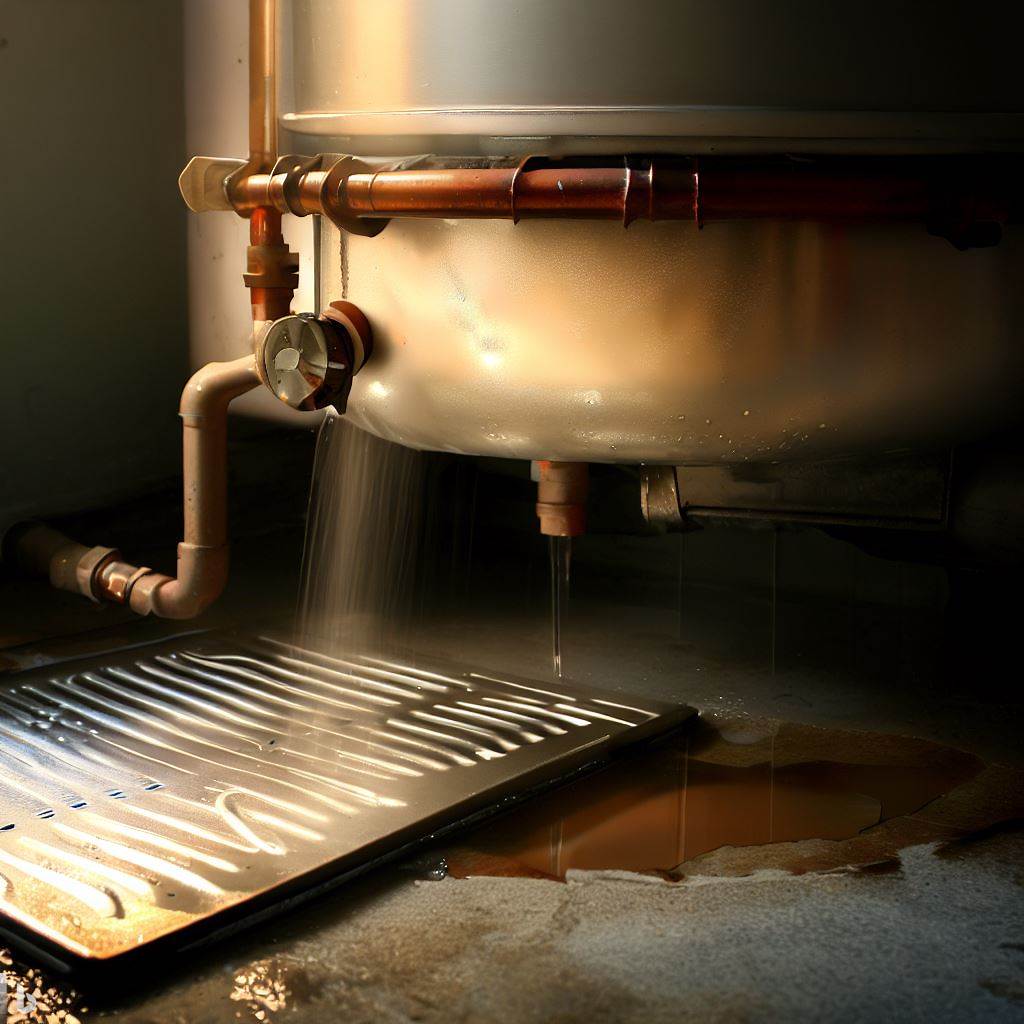Table of Contents
Install Drain Pan for Water Heater
- Gather tools and materials: metal drain pan, silicone/rubber hose, PVC pipe and fittings, PVC cement, pliers, and a floor drain/sump pit.
- Turn off the power supply. Place the drain pan under the water heater on a flat surface, like the floor. Ensure it’s large enough for any potential leaks.
- Connect the drain line to the floor drain/sump pit with a rubber/silicone hose. If there’s no existing drain line, install one using PVC pipe/fittings secured with PVC cement.
- Secure the water heater to the drain pan with pliers. Tighten the nuts to make it firmly attached.
- Test the installation. Fill up a bucket of water and pour it into the drain pan. Make sure everything is connected properly and there are no leaks or overflow.
Pro Tip: Opt for a metal drain pan over plastic- it’s more durable and less prone to cracking.
Follow these steps and your water heater is well-protected. Always check local building codes and regulations for safety standards.
Why is a drain pan necessary for a water heater?
A drain pan is essential for a water heater to avoid water damage to your home. Without one, leaks could cause structural damage or the growth of mold and mildew. The pan provides an extra layer of protection by catching any water that escapes the unit.
Plus, it makes it easier to spot issues with the water heater. With a drain pan, you can quickly see any water accumulation and take action to fix the problem.
Installing a drain pan is straightforward. Follow these steps:
- Choose a spot near a floor drain or sump pit.
- Put the pan underneath the water heater, covering the entire bottom surface.
- Attach a rubber hose or PVC pipe to the drain outlet of the water heater, leading into the pan.
- Secure the connection with fittings and PVC cement.
Now, any leaked water will be directed into the drain pan.
Don’t forget to check the pan for signs of leaks or water. If you notice any issues, take care of them right away.
Installing a drain pan is the best way to prevent water damage, spot leaks, and keep your water heater running smoothly for years.
Cost and materials needed to install a drain pan for a water heater
Water heater leaks can be a nightmare for homeowners! To make sure you’re prepared, let’s look at what materials you’ll need, and how much you can expect to spend, to install a drain pan.
Here’s what you’ll need:

- A drain pan: This will collect any potential water leakage or overflow.
- PVC pipe and cement: Essential for proper drainage.
- A rubber hose: This connects the drain pan to a floor drain or sump pit.
You can expect to spend around $50-$100 for the supplies, depending on the size of the water heater and local costs. Local building codes may also require the installation of a drain pan, so it’s best to consult with a professional plumber first.

A drain pan for water heater
Steps to install a drain pan for a water heater
Installing a drain pan for your water heater is a must. It catches any leaks or drips from the water heater, avoiding harm to floors and surrounding areas. Here’s how to do it:
- Choose the right drain pan: Look for a metal one made for water heaters, that fits the model you have.
- Position the drain pan: Place it under the water heater and make sure it’s level.
- Prepare your floor: If the floor has carpet or other materials that can be damaged by moisture, put a protective barrier like plywood under the pan.
- Secure the drain pan: Use screws or adhesive so it won’t move when there’s activity near the water heater.
- Connect the drainage system: Attach a rubber hose or PVC pipe to the drain outlet on the side of the pan. Make sure it reaches a suitable drainage area like a sump pit or floor drain.
- Test for leaks: Turn on the water heater and check for leaks from both the tank and drainage system connections.
Note: Local building codes might have specific requirements for drain pans for water heaters, so make sure you comply with those regulations before installation.
Also:
- Apply primer and PVC cement to all PVC connections.
- Make sure there’s enough space between the bottom of the water heater and the edge of the drain pan.
- If you have trouble installing it, consult a professional plumber.
Mike had a lesson to learn about drain pans: His water heater failed in his basement, and without a pan, the leaking water caused significant damage – mold growth and structural issues.
This story emphasizes the importance of installing a drain pan: it safeguards against leaks and saves you money on repairs. So, make sure to follow these steps to protect your home from water damage caused by your water heater.

A water heater with drain pan
Additional considerations and tips for installing drain pan for a water heater
It is important to consider the size of the drain pan when installing one for a water heater. Ensure it is large enough to catch any potential leaks or spills. Pick a durable material, like metal or plastic, for longer-lasting results.
Positioning the pan correctly is key. Place it directly beneath the unit, with no gaps. This will help prevent damage to your flooring or surrounding areas.
Also, comply with local building codes. Connect the pan to an appropriate drain line using PVC pipe and cement. The pipe should be properly sloped towards a floor drain or sump pit for proper drainage.
Remember to install a drain pan for your water heater. This will protect your floors and provide an early detection system for leaks. One instance showed the importance of this precaution, when a small leak caused significant damage before it was discovered. So, install the pan and take life’s drip in stride!
Frequently Asked Questions
1. How to install a drain pan for a water heater?
To install a drain pan for a water heater, follow these steps:
a. Turn off the water heater and disconnect the power supply.
b. Place the drain pan in the desired location, ensuring it is level.
c. If necessary, mark the position to cut a hole for the drain line.
d. Cut the hole in the drain pan using a suitable saw.
e. Attach a rubber hose or PVC pipe to the drain valve on the water heater.
f. Run the hose or pipe through the hole in the drain pan.
g. Connect the other end of the hose or pipe to a floor drain or sump pit.
h. Secure all connections with hose clamps or PVC cement.
i. Turn on the water supply and check for any leaks.
j. Reconnect the power supply and turn on the water heater.
2. How much does it cost to install a drain pan for a water heater?
The cost of installing a drain pan for a water heater can vary depending on various factors such as the type of drain pan, labor costs, and local building codes. On average, the cost can range from $50 to $300. It is recommended to consult a professional plumber for an accurate estimate.
3. Is a drain pan required for a hot water heater?
In many areas, local building codes require the installation of a drain pan under a water heater. The purpose of a drain pan is to prevent water damage in case of a leak or a failing water heater. It is always advisable to check with your local authorities or consult a professional plumber to ensure compliance with the regulations in your area.
4. Should you put a drip pan under a water heater?
Yes, it is highly recommended to install a drip pan or drain pan under a water heater. This helps to protect your property from potential water damage caused by leaking water heaters. It provides an additional layer of security and peace of mind.
5. How to install a drain pan under an existing water heater?
To install a drain pan under an existing water heater, follow these steps:
a. Turn off the water heater and disconnect the power supply.
b. Drain the water heater completely.
c. Carefully push the water heater to the side, creating enough space to fit the drain pan.
d. Slide the drain pan under the water heater, ensuring it is level.
e. Secure the drain pan in place using suitable fittings or silicone sealant.
f. Reconnect the water heater and check for any leaks.
g. Restore power supply and turn on the water heater.
6. What are the best materials for water heater drain pans?
Water heater drain pans are commonly available in metal or plastic materials. The choice of material depends on personal preference and specific requirements. Metal drain pans are durable and can withstand higher temperatures. Plastic drain pans are lightweight, resistant to corrosion, and more affordable. It is recommended to check the manufacturer’s recommendations and local building codes to select the appropriate material for your water heater drain pan.
Conclusion
It’s essential to add a drain pan for your water heater to protect your home from water damage. Not only will it stop pricey repairs, but it’ll also abide by local building codes.
When selecting a pan, ensure it fits the size of your water heater and is built strong. Place it directly underneath the tank, with the drain line securely connected to a floor drain or sump pit. Use PVC pipe and cement to make a tight seal.
Plus, add a rubber hose to the relief valve of your water heater. This’ll direct any extra pressure or hot water outside your home, reducing the risk of leaks even more.
Neglecting this crucial step can lead to costly repairs and water damage. Take action now to protect your home and feel at ease.
Installing a drain pan is a simple yet effective measure. Safeguard your home from unexpected water leaks and potential damages. Get started today and relish in worry-free water heater maintenance!
